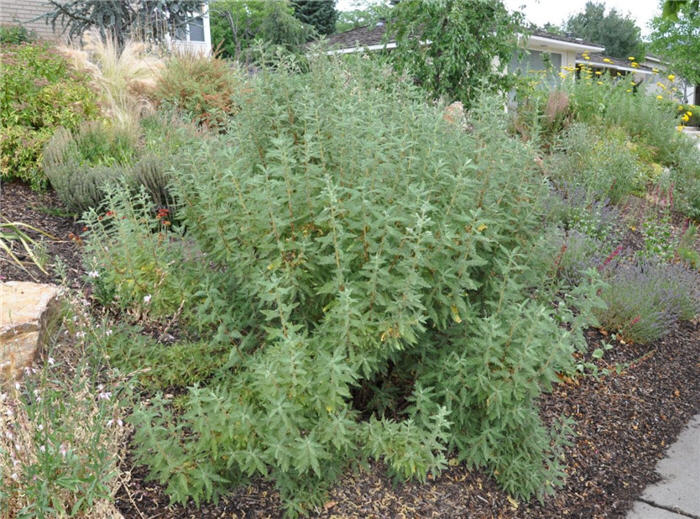| Botanical Name: Chamaebatiaria millefolium | |
| Common Name: Fernbush |

-
Anatomy
-
Culture
-
Design
Plant Type
Shrub
Height Range
3-6'
Flower Color
White
Flower Season
Summer
Leaf Color
Green, Light Green
Bark Color
Red
Fruit Color
n/a
Fruit Season
n/a
Sun
Full, Half
Water
Very Low, Low
Growth Rate
Moderate
Soil Type
Sandy, Clay, Loam, Rocky, Unparticular
Soil Condition
Average, Rich, Poor, Well-drained, Dry
Soil pH
Neutral, Basic
Adverse Factors
Attracts Bees
Design Styles
English Cottage, Formal, Mediterranean, Ranch
Accenting Features
Fragrance, Showy Flowers, Unusual Foliage
Seasonal Interest
Summer
Location Uses
Perennial Border, Shrub Border, Foundation, Patio, Walls / Fences
Special Uses
Hedge, Small Spaces
Attracts Wildlife
Birds, Butterflies
Information by: Stephanie Duer
Photographer: Mountain States Nursery
Photographer: Mountain States Nursery
-
Description
-
Notes
Fernbush is a wonderful Utah native, well suited to urban life. It has an upright, rounded form, growing about 3 to 5 feet tall. Bright green foliage emerges in the spring, and as the name suggests, has a fern-like appearance. foliage has a lemony-pine scent when bruised. Mid-summer sees clusters of white flowers appearing at the ends of branches. Bark is red and shreddy. Though not typically evergreen in our region, it holds its foliage late into the autumn. Use in the shrub or foundation border, as an informal hedge, or near the veggie garden as a pollinator-attractor.
Grow in well drained soil and in full sun to part shade. It is adaptive to a wide range of soil types, including heavy clay soils and poor soils. Flowers attract native bees, butterflies, and and other beneficial insects. Very drought tolerant once established. Prune hard, nearly to the ground, in late winter to keep the form tidy and to produce lots of branches for flowering. Cold hardy to -25f.